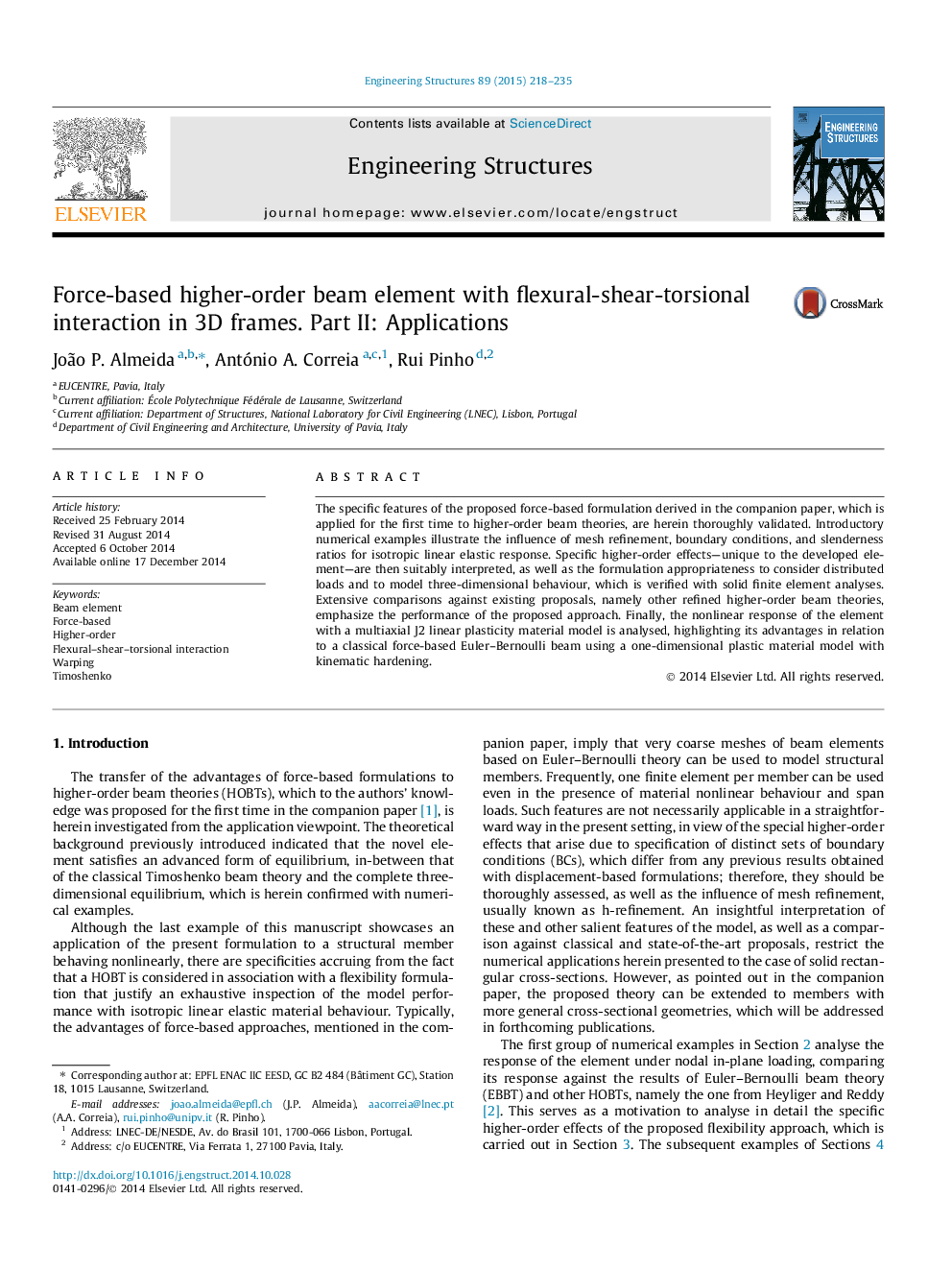| Article ID | Journal | Published Year | Pages | File Type |
|---|---|---|---|---|
| 6740442 | Engineering Structures | 2015 | 18 Pages |
Abstract
The specific features of the proposed force-based formulation derived in the companion paper, which is applied for the first time to higher-order beam theories, are herein thoroughly validated. Introductory numerical examples illustrate the influence of mesh refinement, boundary conditions, and slenderness ratios for isotropic linear elastic response. Specific higher-order effects-unique to the developed element-are then suitably interpreted, as well as the formulation appropriateness to consider distributed loads and to model three-dimensional behaviour, which is verified with solid finite element analyses. Extensive comparisons against existing proposals, namely other refined higher-order beam theories, emphasize the performance of the proposed approach. Finally, the nonlinear response of the element with a multiaxial J2 linear plasticity material model is analysed, highlighting its advantages in relation to a classical force-based Euler-Bernoulli beam using a one-dimensional plastic material model with kinematic hardening.
Related Topics
Physical Sciences and Engineering
Earth and Planetary Sciences
Geotechnical Engineering and Engineering Geology
Authors
João P. Almeida, António A. Correia, Rui Pinho,
